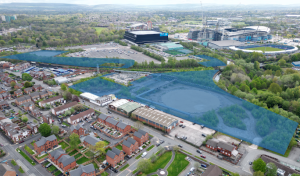"Wave power could provide 50% of NW’s electricity"

BUILDING four estuary barrages in the North West could provide more than 5% of the UK’s electricity, a report said today.
Scientists at the University of Liverpool believe that estuary barrages, across the Solway Firth, Morecambe Bay and the Mersey and Dee estuaries, could be capable of meeting approximately half of the region’s electricity needs.
The study, produced in collaboration with Proudman Oceanographic Laboratory, examined ways to generate electricity from tidal sources of renewable energy in the Eastern Irish Sea.
Funded by the North West Development Agency the team investigated different types of tidal power, including barrages – which run from one bank of an estuary to another and guide water flow through sluices and turbines – using advanced two-dimensional computational modelling.
They found that the most effective mode of generating electricity was ‘ebb generation’, which involves collecting water as the tide comes in and releasing the water back through turbines once the tide has gone out.
The barrages would provide substantial sea defence, as well as flood alleviation, by draining the estuary following heavy rainstorms. Electricity generation could also help to achieve the UK’s CO2 emission reduction targets.
Professor Richard Burrows, from the maritime environmental and water systems research group, in the University’s department of engineering, said: “With concerns mounting over the UK’s future energy provision it will soon become paramount that all sources of renewable energy are fully developed. Unlike the wind, tides are absolutely predictable.
“The geographical location of the UK, and the seas that surround it, provide a great platform for marine renewable sources.”
Joe Flanagan, head of energy and environmental technologies at the NWDA said: “The NWDA is pleased to have supported this project, which has provided an important stimulus to the concept of tidal power in England’s North West.
“There are a variety of groups and individuals promoting a number of schemes in the region, which have now been brought together under the Northwest Tidal Energy Group.
“Building on the work of the Liverpool team, I expect that a number of more detailed feasibility studies of individual schemes will be undertaken in the near future. Although most of the focus for tidal energy has been in the Severn estuary I would welcome the UK’s first major tidal scheme here in the North West.”








